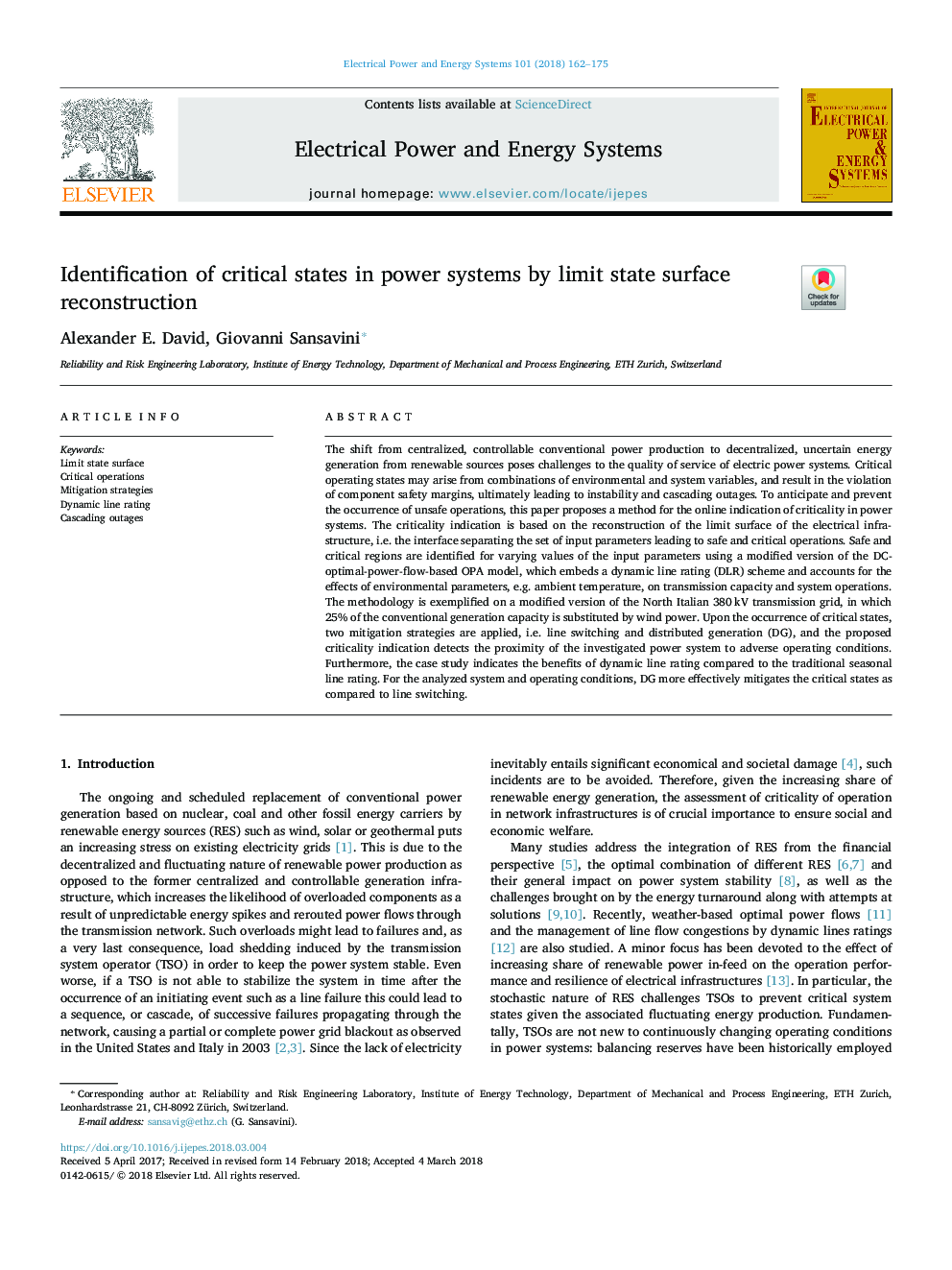| Article ID | Journal | Published Year | Pages | File Type |
|---|---|---|---|---|
| 6859238 | International Journal of Electrical Power & Energy Systems | 2018 | 14 Pages |
Abstract
The shift from centralized, controllable conventional power production to decentralized, uncertain energy generation from renewable sources poses challenges to the quality of service of electric power systems. Critical operating states may arise from combinations of environmental and system variables, and result in the violation of component safety margins, ultimately leading to instability and cascading outages. To anticipate and prevent the occurrence of unsafe operations, this paper proposes a method for the online indication of criticality in power systems. The criticality indication is based on the reconstruction of the limit surface of the electrical infrastructure, i.e. the interface separating the set of input parameters leading to safe and critical operations. Safe and critical regions are identified for varying values of the input parameters using a modified version of the DC-optimal-power-flow-based OPA model, which embeds a dynamic line rating (DLR) scheme and accounts for the effects of environmental parameters, e.g. ambient temperature, on transmission capacity and system operations. The methodology is exemplified on a modified version of the North Italian 380â¯kV transmission grid, in which 25% of the conventional generation capacity is substituted by wind power. Upon the occurrence of critical states, two mitigation strategies are applied, i.e. line switching and distributed generation (DG), and the proposed criticality indication detects the proximity of the investigated power system to adverse operating conditions. Furthermore, the case study indicates the benefits of dynamic line rating compared to the traditional seasonal line rating. For the analyzed system and operating conditions, DG more effectively mitigates the critical states as compared to line switching.
Related Topics
Physical Sciences and Engineering
Computer Science
Artificial Intelligence
Authors
Alexander E. David, Giovanni Sansavini,
